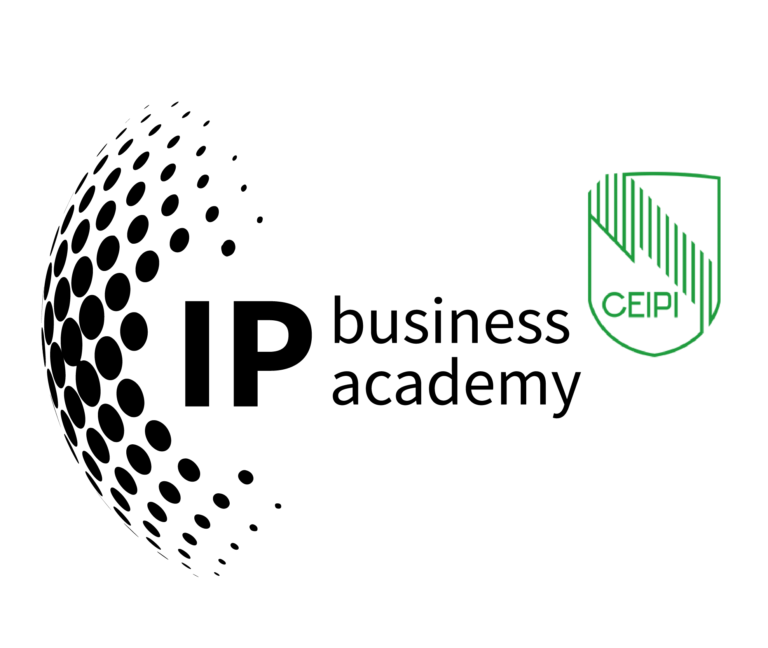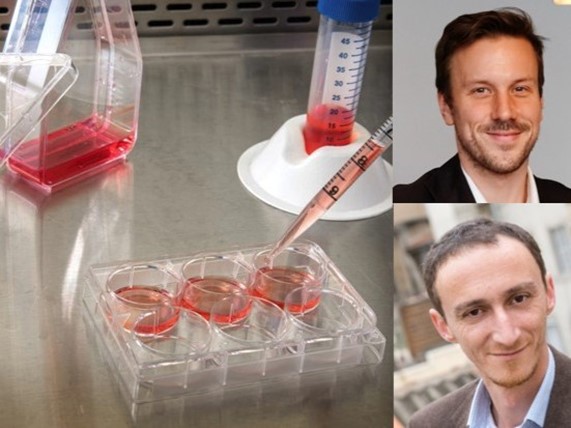IP Licensing in Life Sciences: Insights from the CEIPI IP Business Live Talk
July 22, 2025, the CEIPI IP Business Academy hosted a compelling IP Business Live Talk featuring two prominent figures in licensing compliance: Tomas Geerkens, IP Subject Matter Expert for Licensing Compliance, and Younes Lazrak, CEO of Innovation &(in) Alliances. The session focused on one of the most crucial, yet often overlooked aspects of intellectual property in the life sciences sector: IP licensing and royalty compliance.
This post explores the key takeaways from that conversation—covering licensing structures in life sciences, the complexities of royalty compliance, and the strategic collaboration between legal, financial, and technical experts. Whether you’re a tech transfer professional, an IP manager in a biotech company, or a legal expert dealing with licensing contracts, this session delivered both practical knowledge and strategic foresight.
Licensing: The Business Engine of Life Sciences
Licensing isn’t just a contractual formality—it is the engine that powers R&D, market entry, and innovation monetization in life sciences. As Prof. Alexander Wurzer noted in the introduction, “licensing is the business machine” of the sector. Especially in biotech and pharma, where technologies must pass through long regulatory pathways, IP licensing governs how and when technologies can generate revenue.
Younes Lazrak entered the world of IP through a serendipitous internship in a tech transfer office. What began as a temporary replacement evolved into a lifelong career in IP and licensing. He successfully closed his first license within six months—a rare feat in an industry known for its complex deal structures.
For Tomas Geerkens, the path into licensing was fueled by an interest in multicultural, international business. As he put it, “the field of licensing is very global… it’s a benefit for me in terms of wanting to work in different geographies.”
Why Royalty Compliance Audits Matter
Royalty compliance audits are often viewed as formalities, but this session made clear: they are strategic tools to preserve value. Most organizations either underutilize or misunderstand their own licensing data, leaving millions in uncollected revenue on the table.
Geerkens explained the three key ingredients for effective royalty auditing:
1 . A license agreement (with audit rights)
2 . Running royalty rates
3 . Time-based revenue obligations
Without these, compliance becomes almost impossible. But even with them, audits are still essential because most ERP systems can’t manage the nuance of licensing agreements—especially after amendments or changes in personnel.
According to Geerkens, an astounding 85% of licensees underreport royalties, and in 10% of cases, variances exceed 100%. Not out of malice, but due to organizational complexity and fragmented processes.
Collaboration: Financial Meets Technical Expertise
One of the most insightful points in the talk was the unique synergy between financial auditors like Geerkens and technical-industry experts like Lazrak.
Lazrak, with his background in biochemistry and over two decades in biotech, emphasized that a comprehensive compliance audit must cover both the books and the technology:
- Are the patents being used correctly?
- Do product developments match licensing scopes?
- Are milestone triggers and royalty definitions clearly understood?
In many organizations, especially outside large pharma, this expertise doesn’t reside in one person. Compliance requires cross-functional alignment—between legal, finance, R&D, and licensing professionals.
The Complex Licensing Landscape in Life Sciences
Lazrak shared that the key differences in licensing structures are less about the industry and more about the regulatory status of the product. Regulated products like pharmaceuticals and implantable devices require exclusive licensing due to high investment thresholds. Conversely, diagnostics and research tools often operate under non-exclusive or service-based licensing models, especially in regions like the U.S. where CLIA labs are mandated to offer widespread access.
This difference directly influences royalty tracking. For example:
- Pharma: fewer licensees, but highly complex milestone structures and global regulatory events.
- Diagnostics: multiple licensees, often operating simultaneously, and local service delivery.
Such structural differences have a significant impact on audit strategy and IP enforcement.
Auditing from Both Sides: Licensor and Licensee Perspectives
Both speakers have worked on both sides of the licensing table—offering and taking licenses. This duality gives them a unique understanding of how trust, due diligence, and continuous monitoring play out in real-world relationships.
Lazrak noted that many licensors fail to do proper due diligence before granting licenses, often leaving money and strategic control on the table. Meanwhile, licensees may unknowingly infringe terms simply because of poor internal communication or forgotten obligations.
This is where post-signature relationship management becomes vital. As Lazrak eloquently put it:
“A license is not a signature. A license is a long-term partnership.”
This relationship must be maintained, monitored, and nurtured. Not doing so risks value erosion, legal exposure, and even reputational damage.
Self-Audits and the Case for Proactivity
To mitigate unintentional breaches, Lazrak advocates for mandatory self-audit clauses in licensing contracts, requiring the licensee to audit themselves every two years.
His own experience confirmed this approach. While conducting an internal audit at his previous company, Lazrak discovered discrepancies due to CRM systems misallocating territories. Not fraud, but simple system error—one that might never have surfaced without a self-audit.
Geerkens added that external audits are not adversarial. They are an “error correction mechanism” that both sides can use to foster transparency. Often, licensees are relieved to see an auditor arrive because it means someone is finally taking the contract seriously.
Licensing Audits and M&A Due Diligence
A surprising insight came from Lazrak’s M&A experience: shortly after his company was acquired, the acquirer conducted a royalty audit on all out-licenses. In a prior acquisition, half of the acquired licenses were non-functional—no reports, no payments, no follow-up. For the buyer, that meant immediate upside. For the seller, a loss of valuation due to poor license management.
This underscores the importance of audit readiness not only for compliance, but for corporate value.
AI and the Future of Licensing Compliance
In the final moments of the talk, an audience question touched on AI in licensing compliance. While not widely deployed today, both speakers acknowledged that AI will soon become integral to IP management:
- In diagnostics, AI is already outperforming doctors in certain types of analysis.
- In drug development, AI tools are reducing candidate screening from thousands to a handful—saving time and money.
- In auditing, Geerkens’ firm is actively investing in AI-based compliance frameworks, though full deployment is still under development.
As licensing data grows in volume and complexity, AI will be essential in maintaining accuracy, efficiency, and trust.
Lessons for IP Experts and Organizations
This session wasn’t just a technical breakdown—it was a wake-up call for IP experts, tech transfer offices, and in-house counsel. Here are five key lessons:
- Royalty compliance is a strategic business function, not a postscript.
It ensures that the true value of licensing agreements is realized and that both parties receive their fair share. Treating compliance as an afterthought risks significant revenue loss and legal exposure. - Audit rights must be built into contracts from the beginning.
Without clearly defined audit clauses, licensors may lose the ability to verify payments or correct misunderstandings. Early integration of audit provisions protects long-term interests and reinforces trust. - Cross-disciplinary collaboration between finance and science is essential.
Only by combining financial expertise with technical insight can licensing agreements be interpreted and monitored correctly. This synergy allows for a holistic understanding of milestones, royalties, and IP scope. - Self-auditing and dashboard tools can prevent small issues from becoming big problems.
Regular internal reviews help identify misallocations or system errors before they escalate. Dashboards provide transparency and enable proactive adjustments across departments. - Licensing is not a transaction; it is a relationship—and relationships require care.
Successful licensing depends on continuous communication, trust, and mutual benefit over time. Like any partnership, it must be managed and nurtured beyond the signature.
Final Thought
At the CEIPI IP Business Academy, we’re committed to making this knowledge accessible and actionable. That’s why Tomas Geerkens’ full materials are available in the dIPlex, and why we continue to feature leading experts in our IP Business Live Talk series.
👉 You find the 🔗dIPlex on Controlling License Contract Compliance by Tomas Geerkens here.
This session revealed a simple but powerful truth: compliance is not a constraint—it is an enabler of value. Done right, licensing compliance strengthens partnerships, safeguards innovation, and creates a foundation for smarter growth.
Explore More
👉📑 Learn more in the IP Business Academy’s glossary entry on IP Licensing Compliance Audit.
👉 🎧 Hear you find episode #12 about Licensing Compliance Controlling.
👉 Here you can find Tomas Geerkens IP Subject Matter profile on the 🔗dIPlex
👉 Here you can find Younes Lazrak on LinkedIn
What’s Next?
The next IP Business Live Talk featuring Tomas Geerkens is scheduled for September 3, 2025. Join us again to learn more about royalty auditing frameworks, AI-powered compliance, and smarter licensing practices.



